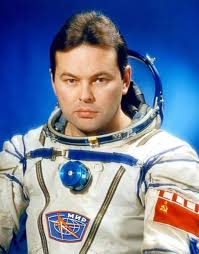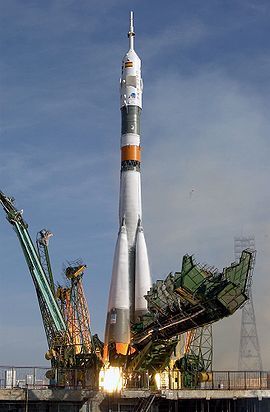Aleksandr Laveykin
Russian - (RFSA)
Retired
Date of Birth: April 21, 1951
Age: 74
Aleksandr Ivanovich Laveykin (Russian: Александр Иванович Лавейкин; born April 21, 1951) is a retired Soviet cosmonaut. Born in Moscow, Laveykin was selected as a cosmonaut on December 1, 1978. He flew on one spaceflight, for the first part of the long duration expedition Mir EO-2. He flew as a flight engineer, and was both launched and landed with the spacecraft Soyuz TM-2. He spent 174 days 3 hours 25 minutes in space. Married with one child, Laveykin retired on March 28, 1994. Launched in February 1987, his spaceflight was intended to last until December 1987, but doctors on the ground determined that he was having minor heart irregularities. For this reason, in July he was replaced by Soviet cosmonaut Aleksandr Pavlovich Aleksandrov, who stayed on Mir to the end of the expedition in December.
Soyuz-U2 | Soyuz TM-2
Soviet Space Program | RussiaBaikonur Cosmodrome, Republic of Kazakhstan
Feb. 5, 1987, 9:38 p.m.
Status: Success
Mission:
Soyuz TM-2 was the first crewed flight of the new Soyuz TM spacecraft and the second long-duration mission to Mir space station. The mission began on February 5, 1987, 21:38:16 UTC, launching Commander Yuri Romanenko and Flight Engineer Aleksandr Laveykin into orbit. They docked with Mir two days later. During their stay there, new module was docked to the station. Crew was visited by several Progress resupply missions and by a crewed Soyuz TM-3 mission. The mission concluded with a safe landing back on Earth on December 29, 1987, 09:16:00 UTC.
Low Earth OrbitThe Roscosmos State Corporation for Space Activities, commonly known as Roscosmos, is the governmental body responsible for the space science program of the Russian Federation and general aerospace research. Soyuz has many launch locations the Russian sites are Baikonur, Plesetsk and Vostochny however Ariane also purchases the vehicle and launches it from French Guiana.
Falcon 9
Starlink Group 15-11
Space Launch Complex 4E - Vandenberg SFB, CA, USAA batch of 27 satellites for the Starlink mega-constellation - SpaceX's project for space-based Internet communication system.
Kinetica 1
9 satellites
Launch Area 130 - Jiuquan Satellite Launch Center, People's Republic of ChinaShare ride of 9 satellites to sun-synchronous orbit: * Satellite 813 (United Arab Emirates) * Jilin-1 Gaofen 07B-01/07C-01/07D-01 * Dongpo-15 …
Falcon 9
NROL-77
Space Launch Complex 40 - Cape Canaveral SFS, FL, USAClassified payload for the US National Reconnaissance Office.
Long March 3B/E
TJSW-22
Launch Complex 3 (LC-3/LA-1) - Xichang Satellite Launch Center, People's Republic of ChinaChinese classified satellite claimed to be for communication technology test purposes. Actual mission not known.
Long March 4B
Yaogan 47
Launch Area 94 (SLS-2 / 603) - Jiuquan Satellite Launch Center, People's Republic of ChinaThe Yaogan 47 is a Chinese military “remote sensing” satellite of unknown purposes.



